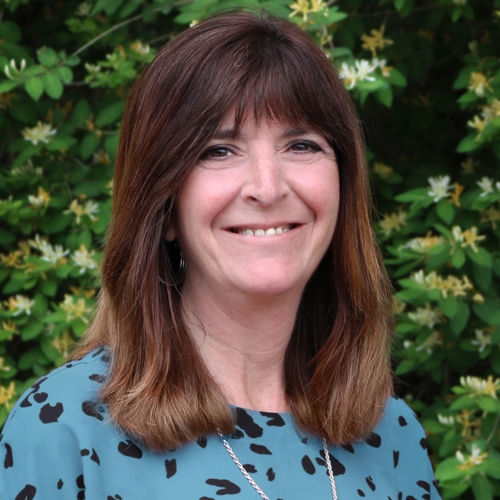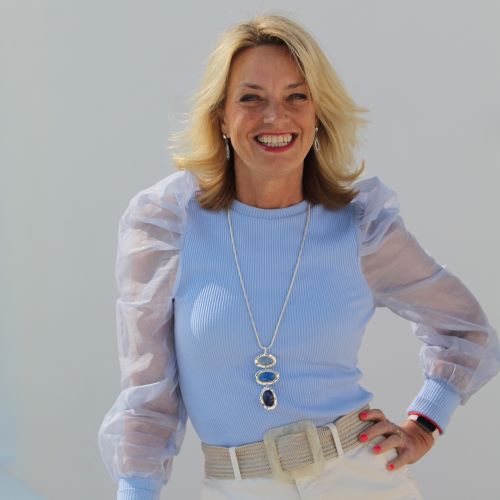Rhonda Vaccaro – FAM Tour
Episode 37: Strengthen Key Relationships with a FAM Tour, with Rhonda Vaccaro
In this episode, you will learn about collaboration across county lines with a FAM tour from Rhonda Vaccaro, Vice President and Senior Consultant at Break The Ice Media.
Rhonda brings more than 20 years of sales and new business development to the table. She’s a master at creating relationships and has a deep understanding of sales strategies, creating win-win opportunities for BTI’s tourism clients. Rhonda and her staff are able to act as a much-needed sales arm for Convention and Visitors Bureaus (CVBs), providing management, tracking and reporting, and of course– closing those sales successfully.
With her easy-going personality and high attention to detail, Rhonda is able to put her management skills to work as BTI’s HR person, and Office and Operations manager.
Today, we are going to dive into how tourism destinations collaborate to provide product for travel trade markets to sell. Whether it is a domestic motor coach group or an international FIT visitor, they do not travel by county line. I can’t wait to hear what Rhonda has to share on this topic. Thank you for joining me, Rhonda.
I’m so excited to be here, Nicole.
I am excited to have you as well and I know that you are going to share a lot of great insight with our listeners. You’ve actually worked on many projects that involve multiple tourism destinations as you work in the travel trade industry. Could you share one that might stand out in your mind that might make a nice case study for our listeners to learn from?
Sure. Definitely. There’s one specific one that I actually worked on last year and am working again on this year. It’s something that’s been done, this will be the second year in a row it’s been done through the Central New York region and it’s one that I’ve been involved in from start to finish. So, it definitely stands out in my mind and I would love to talk about it. It’s very in-depth, the meaning of collaboration. So, what this one was is a FAM tour, familiarization tour, that we had through the entire Central New York region and it involved five counties. It actually took place in September of 2016, but we started working on it as a cohesive group in January of 2016, and then in April we started having regular meetings. So, as you can see, it takes a lot of time to pull this all together.
What we did is have one place where the individuals — the FAM tour participants — stayed. There were two bus loads so there were about 80 different people and they all stayed in the same city in two separate hotels so we had to work with different hotels and we had to work with getting them all in the same place at the same time and then through that they went to five different counties across three days and had different experiences within those counties because, of course, as you know, people do not travel in county lines. It ended with a trade show where, not only did they all attend, but other tourism professionals attended as well as exhibitors participating from convention and visitor bureaus, hotels, resorts and attractions across the entire east coast. So, this really involved many, many people.

Source: Pexels
[bctt tweet=”“People do not travel in county lines.” – Rhonda Vaccaro #WhyCollaborate #Podcast”]
I had the opportunity, because of working with one of our clients, Visit Syracuse, which was a host city, to be a part of the entire FAM process. I escorted the group through the whole entire thing. So, not only was I in the planning process, I actually was a part of the FAM experience as well.
Wow. That’s really awesome. There are so many layers to this tour because you’re talking about multiple destinations, multiple counties, each, I know that has their own tourism promotion agency or DMO and you’re also talking about two hotels and a whole bunch of different attractions and experiences that all come together under this three-day tour. Can you talk a little bit about the types of people that were on the familiarization tour?
Sure. So, what made this tour so incredible was it was all tourism professionals. So you have group tour operators and then you have international professionals as well. So we had group tour operators from the UK and we had some from China and we also had receptive operators that work in the international market but does FIT. So, you had people across all sorts of levels of tourism that were all having this experience together and we had to make sure that we spoke to all of these different people and met each one of their needs or answered all of their questions and showed them how they can market this to their customers. So, group tour operators domestically, so right from here in New York State to along the east coast, to people from Ireland, to people from China. So, it was a pretty diverse group.
Yeah. I would say. Well, that’s really awesome and I know from this experience and the many other experiences that you’ve had working in this industry, you’ve identified some key ingredients that go into a successful collaboration. Can you share with our listeners what those are?
Oh, absolutely. I’d love to. And really, the first thing that you have to do is really think about what you’re doing, who’s involved, so you need to identify the team and the team could be attractions, it could be DMOs, or TPAs, it could be the bus company or whatever it might be but you’ve got to identify who the core team is going to be. In the case of this Central New York FAM, it was the organizer of the company that actually organized it and then it was each of the county representatives, the TPAs that were involved in this. And you have to, when you have a team, there’s got to be a leader of the team even though everyone on the team, in this case, were peers as far as what they did for their respective counties, someone’s got to be responsible for putting it all together. If you don’t, everyone’s going to do their own thing and no one’s going to really be accountable to anyone or any entities. So, it’s really important to identify your team first and then establish who the leader is.
The next thing that you have to do, and the leader really at this point is gonna do that, is establish a forum where open communication is asked for, is welcome, and it’s a must, because people have got to feel comfortable to talk about whatever it is they have to do or their concerns, whether it be I’m not sure that this attraction is going to be able to accommodate this many people or I’m not sure that this restaurant is going to be open yet, because we actually had that. We actually went to a restaurant that wasn’t even open until the next following week so we had to work with them and see what they needed from us and they did a wonderful job. So, you really have to have communication flowing openly and consistently.

Photo by Christin Hume on Unsplash
[bctt tweet=”“Communication in a collaboration has to flow openly and consistently.” – Rhonda Vaccaro #Podcast”]
The next thing is, you have to have a common goal. What is it that you’re trying to do? Because you are all talking to the same people and you should come across as a cohesive group. It’s one group with a common goal. And in this case, it was come and bring your customers whether they be group tours or individuals to our destinations, and this is the types of things they’ll do, this is how they’ll be received and this is what they can expect. And then everyone, once they agree on the common goal, will work toward it because if it’s not clear, someone may not even know and not agree with it.
Another really important part, of course, is money. Right? What can you do without the money? So you have to have a budget and when these things happen, it becomes expensive with all the things you want to do. And there’s your out-of-pocket costs like what’s the bus going to cost or what’s the hotel going to cost? But then you also have to figure out what meals are gonna cost and who’s going to pay for what. And we had a trade show so, what is that going to cost?
So, you have to determine a budget. Everyone wants to give people gifts or trinkets from their local areas that they can take back and have a memory and understand how the big picture works so, what’s that gonna cost? So, there has to be a budget that you’re working in. And it’s also important that each place you go to, for instance, each meal, is about the same amount of money because you want each experience to be relatively similar. Even though the food might be different and the venue might be different, you don’t want one restaurant to serve a five-course meal, another restaurant to serve a buffet, three different things, because that’s what they thought the budget was. So, you have to be really clear on the budget. And someone’s got to be responsible for overseeing it. Where is the money? How is it being spent? Who’s doing what with it?

Source: Pexels
[bctt tweet=”“Each stop in a FAM tour should have a similar budget.” – Rhonda Vaccaro #WhyCollaborate #Podcast”]
And then when you’ve got all that done, you have to really look at the strength of each partner. In this situation, what were the attributes and what were the assets of each of the counties? What were the high points that they are going to offer? Because we have to remember that every TPA, every county wants these people to come and see all the wonderful treasures within the counties, which is great. But we only have three days and we have five counties so, what are the highlights that we’re really going to focus on? One thing for this particular FAM was the craft beverage industry and the craft beverage trail. So, we always wanted to make sure that we highlighted some type of craft beverage location, if we could, within the counties. Things like that. So, what are the assets that each partner brings? And then, you also have to have a defined list of responsibilities because things get crazy. There are so many different people working on so many different things in their world, in their jobs. Who’s going take on what responsibility?
So, someone has to be made accountable and they have to know, by the way, that they’re accountable. So, it has to go both ways. Who’s taking charge and leading the collaborative effort? Who’s the one that has the final word? Who should be receiving the questions and the emails and what is that responsibility of that person? And then you have to identify and work against a deadline and everyone has to agree. If people don’t agree, they won’t buy in. So, you have to agree on it, they have to look at their own calendar and say, “Okay, I can do this by this time.” Because you can’t move forward if you need something from someone and they haven’t done it yet. Something as simple as a description on an itinerary. You want to send out an itinerary and invite people to come but you’re waiting for one person’s description and so everyone has to wait. So, it’s really important to have a defined timeline and to hold people accountable and have everyone agree to it up front and then move on from there.

Source: Pexels
[bctt tweet=”“Planning a FAM tour requires a clearly defined timeline.” – Rhonda Vaccaro #WhyCollaborate #Podcast”]
If you don’t, everyone’s individual priorities, which we all are working in our own worlds all day, so they’re going to influence the ability for the project to move forward. Something that I experienced from every single person on this particular project is their commitment. The team is only as strong as its weakest link we’ve all heard so many times and any lack of commitment, either real or perceived actually must be addressed but not attacked because everyone’s doing the best that they can and if someone’s not understanding something or whatever is going on, then it has to be addressed but again, not in a negative way. Just, “Hey, we’ve got to really get this done and move forward.” And those, if you can cover all that, which we did in about a six month time period, you’ve got a good working group.
I think those are really great strategies and a really great list to follow. In this particular example, of course, you’re talking about a FAM tour in the travel trade market but this could actually be applied to any kind of collaboration. You know, identifying the team or who are the key players, establishing communication. So many times on this podcast we talk about collaboration, communication is the one kind of constant that comes up over and over again. Having a common goal, the idea of needing a budget, understanding strengths of each partner, that’s another reoccurring theme within this podcast when we talk about collaboration is finding people, not only identifying their strengths but also understanding maybe where your weakness is. So, you know what I like about your example here with the FAM tour is different counties might have different assets but they compliment each other and really by putting them all together you have just such a better product and a better experience for the visitor.
And then, the whole idea of responsibilities and timeline and just being committed to the project, I think those are all really great words of advice and a great kind of roadmap for any kind of a collaboration so, I think that’s really awesome and thank you for sharing those. Do you have any other topics or any other words of wisdom, if you will, that you’d like to share with our listeners before we sign off for today?
Well, one thing I want to say for sure is in this particular situation that I talked about, this FAM tour where we had these five counties working together, the benefit from that experience was not only the great product and experience that we were able to provide to these FAM tour participants, but it was the opportunity for these individual people, these TPAs to really work together and that can honestly expand much past this FAM tour. Now you have a relationship, you have a project, you know each other better and you can do things, maybe two counties want to do something. They want to do a combined itinerary together, they already know how to work together. They know the assets that each county has or what have you. So, it goes beyond just the full experiential part of it. It’s really strengthening working relationships overall. So, collaboration is just something that’s so much stronger than just individual participation.

Photo by Redd Angelo on Unsplash
[bctt tweet=”“A great benefit of a FAM tour is the strengthened relationships between members.” – Rhonda Vaccaro”]
That’s a really good point. You never know where it’s gonna lead. It’s kind of like a bit of a building block. You start with this one thing and then it could lead to another and yet another and, like you said, it really is about strengthening those relationships and building on those relationships, which are just so important in so many different ways. So, I think that’s just a really awesome kind of, I want to call it a side effect of this type of a collaboration but it’s also just an important outcome, I guess, would be a better word for it.
Yeah. Exactly.
Well, that’s really great. Well, Rhonda, I really appreciate you spending some time with us today and sharing this really interesting and important bit of advice for our listeners and I know that there’s so much more that you have to share and we will definitely have you on a future teamcast episode. Thanks for being here.
Thanks so much for having me. Looking forward to doing it again.
Resources:
We value your thoughts and feedback and would love to hear from you. Leave us a review on your favorite streaming platform to let us know what you want to hear more of. Here is a quick tutorial on how to leave us a rating and review on iTunes!







